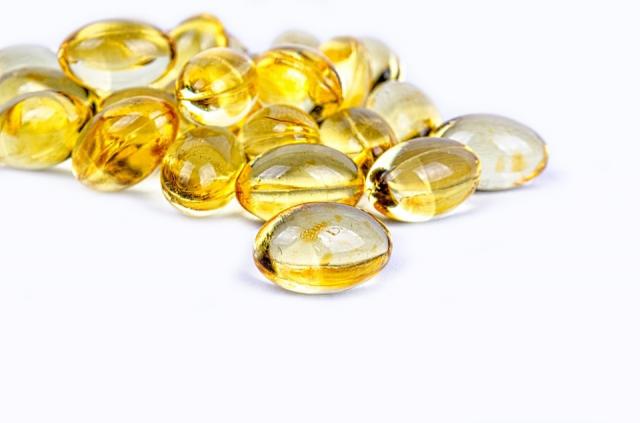What You Need to Know About Vitamin D
 There are signs and symptoms that stem from the lack of vitamin D; one of them is depression. Serotonin, the neurotransmitter that regulates mood elevation rises with more exposure to light. There are many determining factors that place you at risk for a deficiency in Vitamin D. For instance, those with darker skin are more at risk for Vitamin D deficiency. The darker your complexion, the more exposure you need from the sun; almost 10 times more exposure than what you would consider as enough for a pale person. Someone may also have a deficiency in Vitamin D if they are 50 years or older. The older you get, the less your skin responds to sun exposure, resulting in less production of Vitamin D in the body. The kidneys also become less efficient at converting Vitamin D into something usable by your body. Those who are over 50 (especially if they are retired) may also spend more time indoors compared to a younger adult. Sometimes those who come into the doctor’s office complaining of aches and pains in their bones, often end up being misdiagnosed with fibromyalgia or chronic fatigue syndrome, but what they may be experiencing is a Vitamin D deficiency. Ten to fifteen minutes of direct sunlight per day can help the body produce an adequate amount of vitamin D. Some researchers have concluded that Vitamin D helps to relieve pain by aiding in the absorption of calcium, which aids in bone repair and growth. Research has estimated that a majority of people with unexplained sources of pain were found to be deficient in vitamin D levels. There seems to be a correlation between Vitamin D and living with pain. A physician or nutritionist should know enough about Vitamin D, and if they believe you may have this deficiency, they should work with you to develop a treatment plan that includes regular sun exposure and possibly Vitamin D supplements.
There are signs and symptoms that stem from the lack of vitamin D; one of them is depression. Serotonin, the neurotransmitter that regulates mood elevation rises with more exposure to light. There are many determining factors that place you at risk for a deficiency in Vitamin D. For instance, those with darker skin are more at risk for Vitamin D deficiency. The darker your complexion, the more exposure you need from the sun; almost 10 times more exposure than what you would consider as enough for a pale person. Someone may also have a deficiency in Vitamin D if they are 50 years or older. The older you get, the less your skin responds to sun exposure, resulting in less production of Vitamin D in the body. The kidneys also become less efficient at converting Vitamin D into something usable by your body. Those who are over 50 (especially if they are retired) may also spend more time indoors compared to a younger adult. Sometimes those who come into the doctor’s office complaining of aches and pains in their bones, often end up being misdiagnosed with fibromyalgia or chronic fatigue syndrome, but what they may be experiencing is a Vitamin D deficiency. Ten to fifteen minutes of direct sunlight per day can help the body produce an adequate amount of vitamin D. Some researchers have concluded that Vitamin D helps to relieve pain by aiding in the absorption of calcium, which aids in bone repair and growth. Research has estimated that a majority of people with unexplained sources of pain were found to be deficient in vitamin D levels. There seems to be a correlation between Vitamin D and living with pain. A physician or nutritionist should know enough about Vitamin D, and if they believe you may have this deficiency, they should work with you to develop a treatment plan that includes regular sun exposure and possibly Vitamin D supplements.
For details about easing pain without the use of prescription medications, (Click Here)

 Emu Oil is a hypo-allergenic oil and has no known harmful side effects. It is also effective when it comes to relieving pain and numerous other discomforts of the skin. Even Dr. Oz has recommended the use of Emu Oil for sore muscles and joints. Laboratories in the United States, as well as Australia, have proven that Emu Oil is very effective at reducing inflammation and joint pain. This is because it contains high concentrations of linolenic acid and oleic acid. The other fascinating thing about Emu Oil is its ability to penetrate deep into the skin, this is what is referred to when you hear someone say that Emu Oil is a Transdermal oil. This quality of Emu oil means that it doesn’t just nourish the surface layers of your skin, rather it absorbs down through the skin and nourishes every layer. Perhaps, this is why so many people find relief when they apply products containing Emu Oil to their swollen, sore, aching, dry, itchy, red, irritated, cracking, peeling, or inflamed areas. When you combine Emu Oil with numerous other natural ingredients known to reduce inflammation and pain, this ability to penetrate the layers of skin is phenomenal because it means all of these beneficial, nourishing ingredients will be carried to the exact area where you feel discomfort.
Emu Oil is a hypo-allergenic oil and has no known harmful side effects. It is also effective when it comes to relieving pain and numerous other discomforts of the skin. Even Dr. Oz has recommended the use of Emu Oil for sore muscles and joints. Laboratories in the United States, as well as Australia, have proven that Emu Oil is very effective at reducing inflammation and joint pain. This is because it contains high concentrations of linolenic acid and oleic acid. The other fascinating thing about Emu Oil is its ability to penetrate deep into the skin, this is what is referred to when you hear someone say that Emu Oil is a Transdermal oil. This quality of Emu oil means that it doesn’t just nourish the surface layers of your skin, rather it absorbs down through the skin and nourishes every layer. Perhaps, this is why so many people find relief when they apply products containing Emu Oil to their swollen, sore, aching, dry, itchy, red, irritated, cracking, peeling, or inflamed areas. When you combine Emu Oil with numerous other natural ingredients known to reduce inflammation and pain, this ability to penetrate the layers of skin is phenomenal because it means all of these beneficial, nourishing ingredients will be carried to the exact area where you feel discomfort.